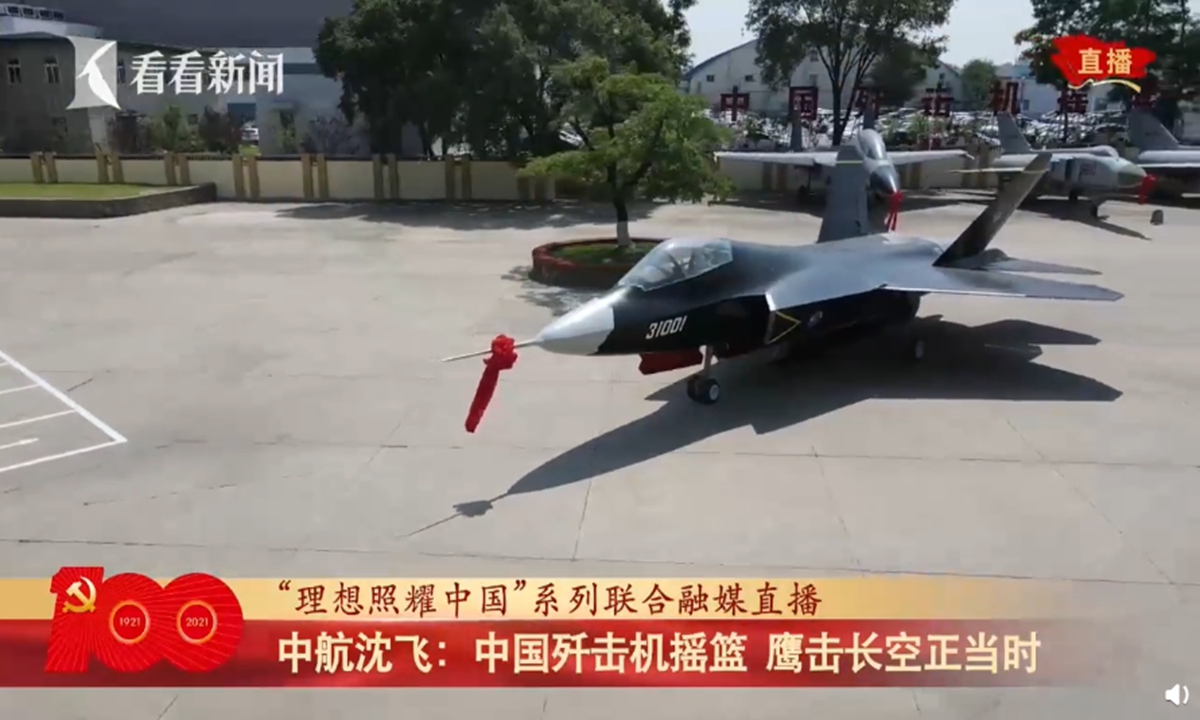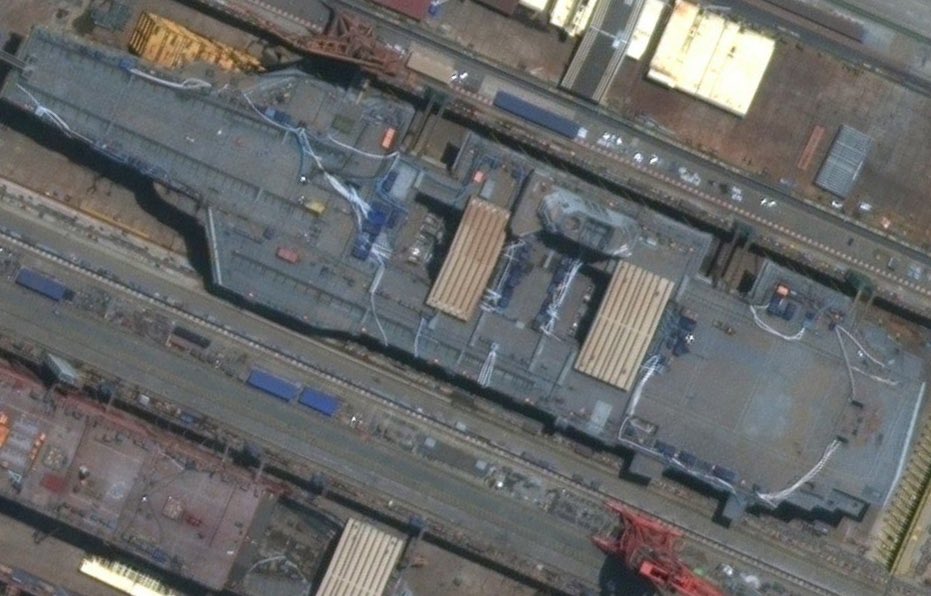As the US shifts its focus to the Indo-Pacific to contain a belligerent China, the latter is rapidly enhancing its naval capabilities. As part of this plan, Beijing is expected to unveil its fifth-generation carrier-based stealth fighter by the end of this year.
China’s New BVR Missile Attached To J-20 Stealth Jets Promises To End US Air Dominance
The announcement was made at the Zhuhai air show. The upcoming aircraft was believed to be a derivative of the indigenous FC-31 stealth fighter, developed by the state-owned Shenyang Aircraft Corporation.
Once inducted into the Chinese PLA Navy, the aircraft is likely to operate from Type 003 supercarrier, which is nearing completion at a shipyard in Shanghai.
“This year, people should be able to see good news on the next-generation aircraft carrier-based fighter jet,” said Sun Cong, chief designer of the FC-31 and J-15. “As soon as it is ready, you will get to see it. Don’t worry. Just wait. It will be here soon.”

A mockup of the jet along with other aircraft built by Shenyang was seen at a PLAN facility in Wuhan where electronic systems for the aircraft carriers are tested.
The sight of FC-31s, J-15s, and a KJ-600 radar early-warning plane at the facility strongly implied that the PLAN wants to form an air wing mixing the three types. This has even been reported to include a mock carrier deck.
According to reports, owing to its outstanding craftsmanship and the use of advanced composite materials, the FC-31 has high stealth capability and can be detected by hostile radars only when it is in the range of 50 km. The same radars are capable of detecting a non-stealth jet more than 100 km away.
US Finally Admits That Russia Is The ‘World Leader’ In Hypersonic Missile Technology?
Initially called J-31, the FIC-31 made its first appearance in 2012. However, the aircraft was kept out of the limelight throughout the last decade, with experts believing the PLA Air Force and Navy weren’t particularly interested in the design and its reportedly weak engines, Popular Mechanics earlier reported.
Type 003 Carrier
Type 003 is a 315-meter aircraft carrier that is central to Beijing’s ambitious naval expansion plan. This would be deployed to counter American naval presence in the Indo-Pacific.
The carrier’s likely operational area would be the Western Pacific, beyond the first island chain which runs through the south of Japan between Taiwan and the Philippines to the South China Sea.
Earlier this year, satellite images revealed the progress made in the Type 003 carrier project. Size-wise, it can be compared with the latest US Ford-class carrier, and it has a similar electromagnetic catapult, which allows it to launch carrier-based aircraft.

According to Sidharth Kaushal, a research fellow at the Royal United Services Institute, Beijing has been engaged in capacity-building exercises over the past two decades in an effort to ensure that America has significant freedom of action in the Western Pacific.
China had begun by developing long-range anti-ship missiles. It is also expanding its naval capacity to the point that American naval presence is only feasible owing to its strategic regional allies.
The Type 003 aircraft carrier as 'introduced' in the latest issue of "Ship Knowledge" together with the J-35 next generation carrierborne fighter. https://t.co/E8E1xhwXOc
— @Rupprecht_A (@RupprechtDeino) February 12, 2021
After World War II, the US emerged as the dominant regional naval power. The post-war superpower guaranteed protection for Japan, South Korea, and the island nation of Taiwan in particular, which Beijing claims owing to a contentious history.
In the past, Chinese President Xi Jinping made it known to the rest of the world that the communist country was working towards developing a world-class navy by 2035.
F-22 Pilot Explains Why His ‘Super Lethal’ Fighter Jet Will Avoid An Aerial Duel With Russian Su-35 Aircraft
The role of carrier-based aircraft like the upcoming stealth fighter is another step towards the country’s broader strategic naval vision and asserting aerial dominance over contested waters of East and South China seas.
5th-Gen Carrier-Based Fighter
Currently, China has two aircraft carriers and is expected to operate four by 2025, the US’ Pacific Command suggests. The Chinese Navy’s Soviet-era carriers have air-wings, which comprise a fleet of 20-30 J-15s.
The third carrier, Type 003, is expected to “significantly upgrade China’s naval capabilities,” according to an analysis of satellite imagery of the ship by three experts at the Center for Strategic and International Studies. Its induction will make the Chinese navy a formidable naval force.
While the 4th-generation jets in service with PLA Navy are highly capable, the induction of a 5th-generation one would offer a potential boost to China’s ability to project power with its carrier force.
US Approves First Overseas Squadron Of F-35A Jets; F-35Bs Get Clearance To Operate From Japanese Carrier
The US Navy is heavily dependent on Nimitz-class carriers. It is also developing its new Ford-class of aircraft carriers. These supercarriers will be deployed from next year in a phased manner.
If anything, the announcement about China’s new 5th-gen carrier-based aircraft is meant for sending a signal to the US. Commenting on this development, a South Asian military analyst said, “The US, better watch out!”
- Aritra Banerjee is a defense journalist who has worked in both online and print media. He has laid an emphasis on issues related to military human resources, tactical psychology, military-media relations, professional military education, and combat fitness. He can be reached on email: aritrareporter@gmail.com.
- Follow EurAsian Times on Google News




